On Monday, Marie will facilitate. She shares:
Today (Sunday) is Earth Day: a wonderful opportunity to pause, to reconnect with the earth and to reflect on our relationship with the earth - in mind, in body and in spirit.
For much of my life, I felt (and acted) like an ant - running across the earth with great industriousness, largely focussed on outcomes. Yes, I appreciated the earth, worried about it and took actions to help heal it. That said, I seldom felt genuinely connected with the earth; in the parlance of Thay (see below), my thoughts and actions were predicated on a dualistic view. About fifteen years ago, I was at a retreat with our (then) young son. During walking meditation in a field, the Dharma teacher said: "with each step, imagine that the soles of your feet are gently kissing the earth." Our son, who was holding my hand, looked up at me and said - with a wide grin: "Mummy, the earth must love this!" This observation, which I have repeated to myself hundreds of times since, has helped to wake me up.
As Thich Nhat Hanh writes in Lion's Roar, we are not separate from the earth:
We think that the earth is the earth and we are something outside of the earth. But in fact we are inside of the earth. Imagine that the earth is the tree and we are a leaf. The earth is not the environment, something outside of us that we need to care for. The earth is us. Just as your parents, ancestors, and teachers are inside you, the earth is in you. Taking care of the earth, we take care of ourselves.
When we see that the earth is not just the environment, that the earth is in us, at that moment you can have real communion with the earth. But if we see the earth as only the environment, with ourselves in the center, then we only want to do something for the earth in order for us to survive. But it is not enough to take care of the earth. That is a dualistic way of seeing.
We have to practice looking at our planet not just as matter, but as a living and sentient being. The universe, the sun, and the stars have contributed many elements to the earth, and when we look into the earth we see that it's a very beautiful flower containing the presence of the whole universe. When we look into our own bodily formation, we are made of the same elements as the planet. It has made us. The earth and the universe are inside of us.
When we take mindful steps on the earth, our body and mind unite, and we unite with the earth. The earth gave birth to us and the earth will receive us again. Nothing is lost. Nothing is born. Nothing dies. We don't need to wait until after our body has disintegrated to go back to Mother Earth. We are going back to Mother Earth at every moment. Whenever we breathe, whenever we step, we are returning to the earth. Even when we scratch ourselves, skin cells will fall and return to the earth.
Breathing in, I know Mother Earth is in me. Breathing out, I know Mother Earth is in me....
I think of the earth as a bodhisattva, a great and compassionate being. A bodhisattva is a being who has awakening, understanding, and love. Any living being who has awakening, peace, understanding, and love can be called a bodhisattva, but a bodhisattva doesn't have to be a human being. When we look into a tree, we see the tree is fresh, it nourishes life, and it offers shade and beauty. It's a place of refuge for so many birds and other creatures. A bodhisattva is not something that is up in the clouds far away from us. Bodhisattvas are all around us. A young person who has love, who has freshness, who has understanding, who offers us a lot of happiness, is a bodhisattva. The pine standing in the garden gives us joy, offers us oxygen, and makes life more beautiful.
When we say that earth is a beautiful bodhisattva, this is not our imagination. It is a fact that the earth is giving life and she is very beautiful. The bodhisattva is not a separate spirit inhabiting the earth; we should transcend that idea. There are not two separate things-the earth, which is a material thing, and the spirit of the earth, a nonmaterial thing that inhabits the earth.
Our planet earth is itself a true, great bodhisattva. It embodies so many great virtues. The earth is solid-it can carry so many things. It is patient-it takes its time moving glaciers and carving rocks. The earth doesn't discriminate. We can throw fragrant flowers on the earth, or we can throw urine and excrement on the earth, and the earth purifies it. The earth has a great capacity to endure, and it offers so much to nourish us-water, shelter, food, and air to breathe.
When we recognize the virtues, the talent, the beauty of the earth bodhisattva, love is born. You love the earth and the earth loves you. You would do anything for the well-being of the earth. And the earth will do anything for your well-being. That is the natural outcome of the real loving relationship. The earth is not just your environment, to be taken care of or worshiped; you are each other. Every mindful step can manifest that love.
With each step the earth heals us, and with each step we heal the earth.
Part of love is responsibility. In Buddhism, we speak of meditation as an act of awakening. To awaken is to be awake to something. We need to be awake to the fact that the earth is in danger and living species on earth are also in danger. When we walk mindfully, each step reminds us of our responsibility. We have to protect the earth with the same commitment we have to protect our family and ourselves. The earth can nourish and heal us but it suffers as well. With each step the earth heals us, and with each step we heal the earth.
When we walk mindfully on the face of the earth, we are grounded in her generosity and we cannot help but be grateful. All of the earth's qualities of patience, stability, creativity, love, and nondiscrimination are available to us when we walk reverently, aware of our connection.
Over the next few days (and beyond), I invite you to explore your connection with the earth. When do you feel most connected? What does the connection feel like and how do you nourish it?
On Monday night, we will listen to a part of beautiful talk by Thay, Moving Beyond the Idea of "Environment" and then share from our experience. On Wednesday morning, in the place of our usual morning Sangha at Circle Yoga, we will celebrate Earth Day by walking the Labyrinth at American University at 7:00am (see announcement below).
With a bow of gratitude for our practice together.
Marie

























